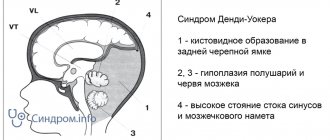- September 15, 2018
- Psychology of communication
- Svetlana Sazhina
Some people tend to fantasize and exaggerate any events. Embellishing the situation may indicate both a violent fantasy and a painful condition. This is especially true for the various symptoms of any illness. In the specialized literature, the term “aggravation” is used to describe this phenomenon. This, as psychiatrists testify, is a tendency to far-fetched exaggeration of the manifestations of an existing illness.
What is aggravation
This phenomenon is due to the real existence of the described symptoms of the disease. The concept is found in two directions - clinical psychology and psychiatry. In general, aggravation is an exaggeration by a person of the severity of symptoms, which can be either conscious or contrived.
The behavior of a person exhibiting aggravation is characterized by increased anxiety and restlessness. Often such a disorder can be evidence of the development of a psychopathological personality.
Determination of stress resistance by level (test from a psychologist)
In order to determine a person’s resistance to stress, there are many tests, answering questions in which you can not only identify your resistance to stress, but also determine the level of self-control in difficult situations that are provoked by stress. After passing the tests, you can choose recommendations for yourself to increase stress resistance.
First of all, do not forget that stress resistance is a determination of a person’s emotional level of excitability. That is why most questions are aimed at finding out how you behave in standard situations - be it your work, home, everyday life, or even leisure.
It is very important to keep the situation under control. A high level of stress resistance allows a person to cope with the most difficult situations that arise along the path of life
There are special methods and tests to determine the level of resistance to stressful events.
Below we invite you to take a test by consulting psychologist Oksana Istratova to identify your level of stress resistance by answering “yes” (+ 1 point) or “no” (0 points) to the questions:
- You always try to finish what you started, but usually you don’t have time, and then you try to catch up.
- You notice signs of fatigue and chronic overwork on your face.
- A dark streak has come in your life.
- Bad habits do not want to submit to your struggle.
- The future makes you anxious
- In order to feel relaxation after a busy day of work, you need doping (alcohol, cigarettes, sedatives, food).
- Change is coming too quickly. You can't keep up with this pace.
- You love your loved ones, but you feel emptiness and misunderstanding on their part.
- Your youth has been wasted. It depresses you.
0-4 points - a high level of self-control in stressful situations. You control yourself without showing unnecessary emotions. Your restraint is enviable. Stress is a common companion in your life.
5-7 points - average level of self-control. It takes a lot of effort for you to control yourself and experience stress. You never know if you can stay cool.
8-9 points - low level of self-control. Your nervous system is exhausted
Pay attention to how you cope with stress. Definitely, increasing stress resistance should be a priority for you.
Why is it necessary to identify levels of stress resistance?
Knowing the real state of things, you will be able to pay attention to the development of stress resistance and plan its correct formation. The ability to control the level of stress in any situation will have a positive impact on a person’s health and relationships, both in society and directly to him
Causes of aggravation
The reasons for this phenomenon, in particular, may be the following factors:
- Hysterical and hypochondriacal accentuations, which are accompanied by mental disorders and deviations.
- Old age, characterized by senile dementia.
- Chronic psychological trauma.
- A physical defect that becomes the object of attention of others.
- Over-concern coming from another person.
- Neuroses of different etymologies.
- Extreme passion for studying medical literature and attributing to oneself all kinds of diseases.
- Careless statements by doctors and medical staff.
The state of aggravation may be accompanied by distrust of treatment methods. The number of complaints increases, and all recommendations are ostracized. At the same time, a person asks for help and expects understanding from others.
Aggression in men
Male aggression is strikingly different from female aggression in its attitudes. Men resort mainly to an open form of aggression. They often experience much less anxiety, as well as feelings of guilt during periods of aggression. For them, aggression is a means of achieving their goals or a unique model of behavior.
Most scientists who have studied human social behavior have suggested that aggression in men is determined by genetic reasons. This behavior made it possible to pass on one’s genes from generation to generation, defeat rivals and find a partner for procreation. Scientists Kenrick, Sadalla, Vershour, as a result of research, found that women consider leadership and dominance of men to be attractive qualities for themselves.
Increased aggression in men occurs due to social as well as cultural factors, or more precisely, in the absence of a culture of behavior and the need to demonstrate confidence, strength and independence.
Symptoms of the disease
The main signs of aggravation are the following deviations in behavior:
- The number of complaints about poor health is gradually increasing, and visits to the doctor are becoming more frequent. At the same time, treatment recommendations are often not taken into account. The patient may delay recovery by deliberately injuring himself.
- Behavior during aggravation is characterized by the presence of real experiences by a person of certain symptoms of the disease. The subject does not invent his illness. He simply exaggerates the severity of this or that illness.
- The manifestation of the disease is actually not as serious and incurable as the patient makes it out to be. Aggravation is always not fully realized.
- Although outwardly a person wants to be cured, subconsciously he fears a complete recovery. To become healthy for him means to lose increased attention and care from others. For a person, especially one who is characterized by a demonstrative-hysterical personality type, this is like death.
- On the other hand, increased attention can give rise to increased aggravative behavior.
- Typical statements of people prone to such a phenomenon are, for example, the following: “I’m going to die, then you will regret it...”, “I don’t have long to live...”, “These diseases will finish me off...”, etc.
A typical portrait of an aggravant
What does an adult aggravant want?
About the same. After all, most often people who are lonely and helpless in life, who have no one to rely on, come to see a doctor with such greatly exaggerated complaints. Or having a family, but not finding support in it. The portrait of a typical representative of this category in everyday life is as follows. This is a middle-aged woman with an unfulfilled destiny, usually childless. She is burdened with numerous problems with work and is ready to “cry into her vest” to the first person she manages to talk to.
It is extremely difficult to get rid of such a person, who is in no hurry to shut up and always finds new reasons to hold someone else’s attention for at least a few more minutes.
The face is very characteristic. These are sharpened features, mournfully pursed lips with downturned corners of the mouth and equally mournful, pleadingly waiting and at the same time empty eyes, as if for her everything had long been decided and finished. Moreover, it is not in her favor.
The movements of the arms express powerlessness; they often seem to fall limply and helplessly, although outwardly their development looks quite normal.
The manifestation of emotions in the course of presenting endless complaints or detailing one of them looks at the same time as carefully restrained, stingy and bashful, but at the same time methodical and unhurried. Even the pauses between phrases look like a continuation of complaints.
Behavior in a neuropsychiatrist's office is not very different from behavior in everyday life and leaves the impression that the patient has nowhere else to go and that she is ready to aggravate the rest of her life in the doctor's office.
Male aggravants look approximately the same and adhere to approximately the same line of behavior. Behavior dictated by the characteristics of a certain mentality.
The difference between aggravation and simulation
It is human nature not only to cultivate real symptoms of a disease, but also to invent non-existent signs of a particular illness. The phenomenon in which a person portrays a fictitious disease is called malingering.
This behavior can occur due to various reasons. The main motive of simulation is to avoid punishment for any sins or to evade responsibility. An example of such an image of an illness could be the behavior of a schoolchild who does not want to attend an educational institution. Simulation is also often used by criminals seeking to deceive investigators. To distinguish this phenomenon from aggravation, it is necessary to conduct a forensic psychiatric examination.
The main difference between simulation and aggravation is the presence or absence of symptoms of the disease in reality. In the first case, there are no signs of the disease. They are the fruit of the individual's imagination. Aggravation is when existing symptoms are exaggerated, either intentionally or subconsciously. The patient not only depicts suffering, but actually experiences it. Both malingerers and aggravants are characterized by complete preservation of personality and awareness of their behavior. At the same time, the second condition, unlike the first, is a painful disorder.
Approaches to aggression
Psychologists, sociologists, and philosophers identify different approaches to aggression.
The normative approach is a definition of aggression that focuses on its inconsistency and illegality with social norms.
O. Martynova defines aggression as destructive, purposeful behavior that contradicts the rules and norms of coexistence of people in society.
Criminal aggression is also defined within the framework of a normative approach, which means behavior aimed at causing intentional moral and physical harm to a living being. As a result, the actions of the aggressor are considered as a contradiction with the norms of criminal law.
The depth psychological approach notes the instinctive nature of this state. In this case, the aggressive state appears to be an integral and innate property of any person. Prominent representatives of the depth psychological approach are the ethological (S. Freud, K. Jung, K. Lorenz, Morris, etc.) and psychoanalytic schools.
The target approach consists in the manifestation of an aggressive state in terms of its functionality and the behavior itself is considered as a tool for successful evolution, dominance, self-affirmation, appropriation of vital resources, adaptation.
Koeroglou and Schwab see in aggressive behavior specifically oriented behavior that is aimed at eliminating everything and overcoming what threatens the mental and physical integrity of the body.
H. Kaufma refers to aggression as a means that allows individuals to obtain a share of resources, which ensures success under conditions of natural selection.
E. Fromm considers malignant aggression to be an instrument of dominance, expressing the individual’s desire to dominate living beings.
Aggression in humans is often a tool of mental self-regulation. Approaches that focus on the consequences of aggression provide a description of its results.
Wilson refers to aggression as a physical action, as well as a threat from one individual, that reduces the freedom and genetic fitness of another individual.
Matsumoto notes that aggression is an act or behavior that causes pain to another individual mentally or physically.
A. Bass gives the following definition of aggression - a reaction in which another individual receives painful stimuli. Aggression is a phenomenon that manifests itself in specific behavior, as well as in a specific action - a threat, causing harm to others.
Zilman gives a similar definition and believes that aggression is the attempt or infliction of physical or bodily harm.
Trifonov E.V. understands aggression as the manifestation of hostility in the actions and feelings of an individual - antagonism, hatred, unfriendliness, hostility.
Types of aggravation
This behavioral disorder, depending on awareness, can manifest itself in several forms:
- Active aggravation is the deliberate prolongation of the disease and the adoption of all possible measures to worsen health.
- The passive form manifests itself in exaggeration of the symptoms of the disease. However, the patient does not take any measures to interfere with the course of treatment.
- The pathological type of disorder accompanies somatic diseases such as psychopathy, hysteria and other similar deviations.
- If we talk about what this is subconscious aggravation, then this behavior is caused by a person’s not entirely clear desire to evoke sympathy, pity and support from others. These actions are mainly aimed at medical personnel, since the patient is often a regular patient in hospitals and clinics.
- Conscious (intentional) aggravation is an exaggeration of painful suffering in the name of personal gain (obtaining some benefits or preferences). Also, such behavior can be used in case of violation of the law, and as a result is punished by law enforcement agencies.
Verbal aggression
This type of aggression represents a symbolic form with the infliction of psychological harm and the transition to vocal data (change in tone, screaming), as well as verbal components of speech (insults, invective).
E. Bass proposed a classification based on the multi-axis principle. Its frame consists of three axes: verbal - physical, passive - active, indirect - direct. E. Bass distinguishes the following types of verbal aggression: verbal - active - direct, verbal - active - indirect, verbal - passive - direct, and also verbal - passive - indirect.
G.E. Breslav supplemented this classification, since an individual often exhibits several types of aggressive behavior, which are constantly changing and transforming into each other.
Verbal-active-direct is verbal humiliation, an insult to another person.
Verbal-active-indirect is the spread of gossip, malicious slander about another person.
Verbal-passive-direct is a personal refusal to communicate with another person, ignoring questions.
Verbal-passive-indirect - is marked by a refusal to give verbal definite explanations or clarifications in defense of a person unfairly criticized.
The question remains controversial as to whether verbal aggression in humans can be expressed through silence, as well as refusal to talk. These actions are more reminiscent of a description of psychological aggression, in rare cases used as a synonym for verbal aggression.
The Yudovsky Scale (OASCL) includes the following forms of this condition in its description: angry speech, loud noise, insults, threats of physical harm, use of obscene language. They note that loud noise, as well as angry speech, are a consequence of the individual’s aggressive intentions and situational irritation.
Verbal aggression in a person can be hidden and open.
Open verbal aggression in a person is expressed by the intention to cause communicative damage to the addressee and manifests itself in humiliating forms (screaming, swearing). Such behavior often turns into physical aggression, in which the aggressor invades the personal space of the recipient.
Hidden verbal aggression is derogatory and systematic pressure on the addressee, but without the open manifestation of hostile emotions. Some researchers believe that verbal aggression in humans is an imitation of genuine aggression. Others note that verbal aggression in humans is only an illusion of discharging hostility, which leads to the accumulation of destructive impulses.
Aggravation in epilepsy: main symptoms
With this disease, the disorder can manifest itself at any age and with different forms of the disease. In 1998, Dr. E. Perucca proposed dividing aggravation in epilepsy into two groups.
The first category includes paradoxical intoxication. This type of aggravation is associated with the use of large doses of antiepileptic drugs during polytherapy. An overdose of anti-seizure medications can cause a seizure, even in people who do not have epilepsy. At the same time, other symptoms of intoxication may be observed, for example, hyperkinesis, hallucinations, heart rhythm disturbances, loss of consciousness, etc. Thus, the use of drugs has a two-phase nature: with an average therapeutic dose, attacks become less frequent, and an increase in it can lead to an increase in epileptic attacks.
The second category of aggravation in epilepsy is the selective form. It is also called pharmacodynamic or drug-dependent. It is a behavioral disorder that is caused by the negative effects of certain antiepileptic drugs (AEDs) on specific types of attacks.
The nature of selective aggravation lies in the prescription of therapy against seizures without taking into account the pharmacological specificity of the drug. The disorder can occur as a result of taking any antiepileptic drug, depending on the type of attack. Thus, in order to treat aggravation epilepsy, the doctor should carefully select treatment methods. It is important to compare them with the individual characteristics of the patient.
Speech aggression
One of the ways to manifest negative emotions is verbal aggression, also known as verbal aggression.
Verbal aggression or rudeness towards an interlocutor is manifested in the use of offensive, harsh words, negative assessments of the interlocutor, mocking intonations, obscene curses, increased voice volume, unpleasant hints, and crude irony.
The subject's verbal aggression is provoked by irritating or disturbing remarks from the interlocutor (excessive affectation, talkativeness, manifestation of hostility, unpleasant remark, sweeping accusation).
Negative emotion can lead to verbal aggression in a person both immediately and later. Aggressive speech behavior can also be provoked by past impressions of a given interlocutor, when he caused a negative emotion.
Speech aggression can also be provoked by the social status of the interlocutor or belonging to the category of people towards whom they feel and experience a negative attitude. Much less often, verbal aggression is explained by other reasons: negative breakdown, mental characteristics of the subject, low level of education.
By eliminating the possibility, as well as avoiding the occurrence of verbal aggression, it contributes to the establishment and success of communication, but does not solve all the issues and difficulties in communication to achieve mutual understanding, agreement, and agreement. In some cases, rudeness is effective in achieving the desired result in communication, but this cannot be a universal rule.
To extinguish verbal aggression, you can use the following phrase: “You allow yourself too much!” and stop talking. Remember that the best cure for anger is to delay it.
Aggravation of mental disorders
In most cases, the patient chooses the mildest manifestations of the disease for simulation. Aggravation concerns real-life diseases. At the same time, the aggravated, colorful aspects of the disease are reproduced.
The most common forms of aggravation are exaggerations of mental disorders - schizophrenia, reactive psychosis, memory impairment, attention, etc. Moreover, in a fit of such a state, the patient can artificially cause an attack of a different nature.
This pathological behavior is divided into three main categories:
- Meta-agravation - the patient deliberately prolongs the most acute phase of the disease (for example, depression, build-up of affective arousal, epileptic seizure, etc.).
- Overaggravation is the attribution of signs that are not characteristic of the disease being diagnosed (for example, intellectual impairment in schizophrenia).
- Dissimulation is an aggravation of symptoms in which the main manifestations of the disease are carefully hidden.
Nature of deviations
The nature and form of manifestations of aggravation, i.e. the choice of exaggerated symptoms and their relationship with the psychopathological structure and course of the disease can serve as one of the indicators of the nature and severity of painful disorders.
Sometimes the very fact of exaggeration is a manifestation of the disease, partly depending on the form of the disease (for example, with hysteria), and partly on the individuality of the patient. Such, for example, is the aggravation observed in patients with severe dementia, which, characterized by inconstancy and conspicuously absurd exaggeration of symptoms, in itself indicates a clear disorder of critical thinking in these patients.
Voluntarily aggravated symptoms must be distinguished from psychogenically caused intensification of painful conditions, often observed in patients in difficult situations, under conditions of psychiatric examination.
Such a distinction can sometimes be very difficult. It can be distinguished by the combination of clinical manifestations in the case of psychogenic exacerbations and the corresponding emotional changes during them.
Diagnosis of aggravation
To correctly determine the specifics of the disease, the doctor must carefully examine the history of the disorder. Additional research will only help clarify the current picture. Sometimes it will take a long period to realize that the patient is exaggerating his feelings.
In most cases, it is common for a person to speculate with his fortune for personal gain. The more others show attention and sympathy to the sufferer, the more active the tactics of such behavior become.
It is quite difficult to define aggravation in psychology. This can be done by very carefully observing a person’s behavior. The reaction of others to the attitude towards the aggravant’s disease will reveal the speculator’s symptoms. A psychological and psychiatric consultation can confirm or refute the diagnosis.
Teenage aggression
Teenage aggression is conscious actions that cause or intend to cause harm to another individual, group of people, or an animal. Intraspecific aggression among adolescents involves causing harm to a group of people or another person.
The concept of teenage aggression includes aggressive behavior expressed in interactions during which one teenager (aggressor) intentionally harms another teenager (victim).
Adolescent aggression can include any form of behavior intended to harm or insult a living being, as well as overtly malicious behavior, which involves actions by which the aggressor intentionally causes harm to his victim. Aggression is expressed in aggressiveness, which is attributed to both genetic predisposition and environmental influences.
An aggressor is an individual who deliberately harms another person, who can mock, fight, or damage things.
A victim is a person who is intentionally harmed by an aggressor.
Spectators are a group of witnesses, students who do not initiate aggressive actions, however, while observing the aggressor and his actions, they do not take the side of the victim, and rarely indirectly or directly help the aggressor.
Researcher Lagerspetz, conducting a study among children 8-15 years old, found that boys resort to aggressive behavior when they are angry, in the form of kicking, chasing, tripping, teasing, and girls boycott the offender, gossip behind their back, and become demonstratively offended.
Increased aggression among adolescents aged 9-15 manifests itself on the street, at school, and at home towards people nearby. This is expressed in physical aggressive behavior, in verbal expression (rude expressions, words), a slight degree of aggressiveness is expressed in relation to inanimate objects, as well as in a hidden form - auto-aggression directed against oneself.
The problem of adolescent aggression is associated with puberty and the transition to adulthood. Children are often unprepared for changes in their usual way of life, they are afraid of independent life, they are afraid of the future unknown, they are unprepared for responsibility, they are overcome by psycho-emotional changes.
Treatment of the disease
Aggravation behavior is characterized by a complete lack of perception of the opinions of others. For an aggranaut, his own person is most important. As a result, to cure the disease it is necessary to bring the patient to a psychiatrist.
Depending on the severity of the manifestations of aggravative behavior, treatment can take different forms:
- Drug therapy.
- Consultation with a psychiatrist.
- Psychotherapy to identify hidden motives for such behavior.
Particular attention should be paid to aggravation of elderly patients. This is due to the fact that, due to age-related changes, the need for increased attention from others develops. In this case, the way out of this situation is social in nature: inviting nurses and companions who are ready to listen to the aggranauts and support conversations on any topic.
About the consequences
Considering the thin line separating a neurotic disorder from a serious mental pathology, which often develops into a psychiatric one, relatives and friends should draw the patient’s attention to the fact of increasingly frequent cases of aggravation. And then gently encourage him to take measures to eliminate the causes that cause it. Measures taken together with the patient.
Measures that do not allow the knot of fears and life problems to transmit every day the increasingly thinning intangible structure called the will to live.
In cognitivism: a pathological state is an exaggeration of a normal emotion.
⇐ PreviousPage 3 of 4
According to Beck, individual vulnerability is determined by the following reasons:
1. biological predisposition
2. individual biographical experience.
A socially dependent person is most sensitive to ruptures in interpersonal relationships. Sadness is a normal emotion, but in pathology it is transformed into an all-encompassing feeling of loneliness, total loss, and meaningless existence. At the level of behavior - withdrawal from activity, withdrawal into oneself.
Cognitive psychotherapy is the consistent breaking of the vicious circle of maladaptive thoughts, negative emotions, and dysfunctional behavior. Cognitive therapy is manipulative, it removes conditions, not the cause, therefore it comes back in a different form.
This is a short-term therapy, easy to implement (exercises for the patient), and effective at the behavioral level.
Cognitive model of anxiety. A person perceives danger not specifically, but vaguely, based on false premises. In a normal person, errors in the perception of danger can be corrected by a real test. In anxiety, the content of cognitive processes is associated with a feeling of vulnerability, anticipation of danger, inability to cope with the threat, fear of losing support in people who can help him. The result of such thoughts: fear of being rejected, ridiculed, despised by others.
The cognitive assessment of danger affects other systems (nervous system, muscular system, rapid breathing, sweating...), the person concentrates his attention on this.
Cognitive model of phobia. Cognitive meaningful psychotherapy is strictly related to the provoking situation. Considering how the patient assumes what might happen to him in a phobic situation. This allows you to identify markers and significant moments. It is necessary to explain to the person that it is not the situation that frightens, but its anticipation. The patient's concerns are not always clearly defined. For example, fear of crowds. The man was afraid of not being able to cope with himself. Why is losing control so scary?
The good thing about the cognitive approach is that a person sees that they are working with him.
Cognitive model of agrophobia. Vulnerability resulting from the transition from experiencing external or internal danger to loss of effectiveness in an interpersonal communication situation. The patient is terrified of finding himself in a situation of psychological or physical catastrophe, when there is no access to the so-called “safety signal”. Face to face with a hostile world. It is important to understand that a person suffers, it is difficult for him. A person who finds himself alone expects death or madness. Selects restrictive, avoidant behavior.
Depression. Quite successful treatment of depression. Depression is characterized by a cognitive triad.
Three main negative assessments:
1. Self-assessment. A person considers himself inferior, defenseless, ineffective. "I'm the worst"
2. Assessment of the environment. Life is too demanding for him, there are insurmountable obstacles to achieving important goals, the world is devoid of joys and pleasures, and in communication with others there is only bad. Not only is man bad, but the world is bad.
3. Assessment of the future. Current troubles do not end, the future does not promise joy, the intended goals are not realized. All this leads to the idea of the meaninglessness of existence. This can lead to suicide. Central factor: negatively oriented thinking. This is the center of the process in depression. Predominant concentration on the negative aspect. This is the result of early childhood negative experiences (for example: through identifying oneself with a significant other). Or the child sees the peculiarities of the attitude towards him.
Features of cognitive style influencing systematic cognitive distortions.
1. derivative inferences - drawing conclusions in the absence of confirmation of facts or even in their presence
2. overgeneralization - the derivation of general principles based on one or several cases and the widespread application of these principles, both relevant and irrelevant to the situation
3. understanding what is happening based on individual details without taking into account the context.
4. seeing events as the result of one’s own efforts in the absence of them in reality. The tendency to relate to oneself events that are not really connected
Obsessive-compulsive disorders.
Obsessions are obsessive thoughts. Compulsions are obsessive actions. Cognitive organization is characterized by a symmetrical view of self and others. “I - others” is a number system, where one nomos is good, the other is bad (more often “I” is bad, “others” are good).
There is always a comparison of oneself with others. Reasons: there could be rigid, emotionally cold and truth-loving parents who adhere to strict moral and physical education of the child. At the same time, they cannot satisfy the child’s needs for play and love. The child has the opportunity to assume that such parents are good. He may consider himself bad. Or the child believes that the parents are bad (alienation). I perceive myself as bad because I avoid good parents. Or he moves away from bad parents. State of uncertainty. A normal child perceives parents as generally good, but sometimes they may not be good enough.
Freud's line of development of neurosis.
In the inner world of the individual, an incompatible representation of impulses and affects arises, which are tendencies opposing each other. As a result, tension is formed that cannot be resolved, as it is associated with some kind of intolerable displeasure (for example: the desire to be autonomous and the fear of being alone).
For neurotics, an unresolved problem causes internal tension that cannot be resolved. To eliminate dissatisfaction, a person excludes experiences from consciousness. The conflict is repressed or defense mechanisms are used and its bearer may feel liberated. This does not go unnoticed for the psyche. The unexperienced feeling tends to break out in the form of a symptom.
Gestalt therapy.
Gestalt therapy does not deal with severe disorders. Frederick Perls. 5 levels of neuroses.
1. Level of falsehood - attitudes seem to be life-like. People play different roles (roles are determined in life activities). It requires people to live up to the expectations of others. Neurotics actualize some abstract concepts and ideas, rather than their own “I am the real.” An elephant is shown trying to be a rosebush.
2. Phobic level. Experiences of fear and pain expected from contact with dissatisfaction, traits of one’s own “I”.
3. Dead end. Experiences are hopeless, lack of meaning in life within us or lack of support from the outside.
4. Experience of death, dying, alienation of part of the “I”. A person must give up his usual roles.
5. Experiences of vivid emotions are allowed. This helps get things moving and continue development.
Psychopathy
Psychopathy means mental suffering. This is a special group of mental patients; it belongs to minor psychiatry (like neurosis)
The condition is stable, accompanies the whole life, manifests itself in a disharmonious personality. These are the characteristics of a person’s personality.
Korsakov and Gannushkin deal with psychopathy. Psychopaths - 5-15% of the total population. This disease occurs in men 2 times more often than in women. Psychopathy is characteristic of adolescence.
Reasons: biological, social.
Biological causes of psychopathy are heredity, parental alcoholism, pathology of internal development: maternal illness, birth trauma.
Social causes of psychopathy - defects in education at an early age, the influence of society.
Gannushkin - psychopathy manifests itself from youth, represents a number of features that distinguish them from so-called normal people and prevent them from adapting to the environment painlessly for themselves and others. We are talking about such traits and characteristics that appear in everything. Psychopathy is total and takes over the entire personality.
⇐ Previous1234
Didn't find what you were looking for? Use Google search on the site:
Differential diagnostics
For differential diagnosis, GNE officials divide into four main subgroups: infectious (most commonly treated), malignant, autoimmune and other factors (Table 2).
Table 2. The most common etiological causes of fever of unknown etiology
Infectious illness
Evil illness
| Autoimmune illness
Another illness
|










